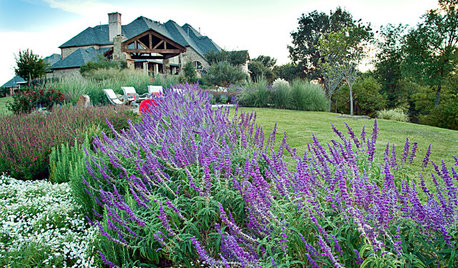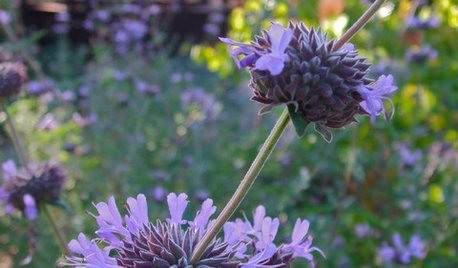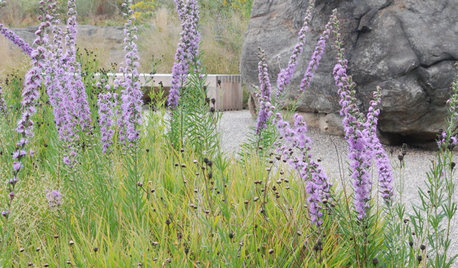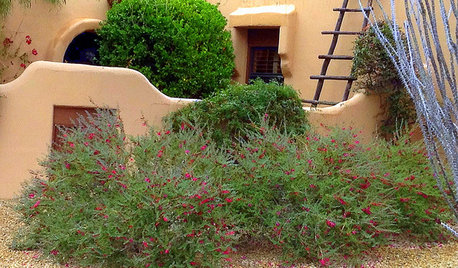Salvias and Compost
hummersteve
17 years ago
Related Stories

GARDENING GUIDESGreat Design Plant: Salvia Leucantha
Soft, velvety purple spikes gracefully arch over the gray-green foliage of Mexican bush sage in spring through fall in western U.S. gardens
Full Story
GARDENING GUIDESGreat Native Plant: Cleveland Sage
Get a whiff of this salvia for a garden experience to remember. Oh, and you can almost forget about maintenance
Full Story
GARDENING GUIDESGarden Myths to Debunk as You Dig This Fall and Rest Over Winter
Termites hate wood mulch, don’t amend soil for trees, avoid gravel in planters — and more nuggets of garden wisdom
Full Story
GARDENING GUIDES20 Favorite Flowers for Butterflies and Bouquets
Discover perennials and annuals that do double duty as butterfly magnets and versatile cut flowers
Full Story
FRONT YARD IDEASBefore and After: Front Lawn to Prairie Garden
How they did it: Homeowners create a plan, stick to it and keep the neighbors (and wildlife) in mind
Full Story
EARTH DAY5 Ideas for a More Earth-Friendly Garden
Consider increasing the size of garden beds, filtering rainwater and using plants to reduce energy use
Full Story
GARDENING FOR BUTTERFLIESGardening for the Bees, and Why It’s a Good Thing
When you discover how hard bees work for our food supply, you may never garden without them in mind again
Full Story
GARDENING GUIDESNative Wildflowers for the August Transition Into Fall
Keep the garden colorful with these stalwart perennials
Full Story
GARDENING GUIDESGreat Design Plant: Valentine Bush for Heartfelt Winter Color
Passionate red flowers from winter through spring add gorgeous color to bare Southwest landscapes
Full Story
SAVING WATERXeriscape Gardens: How to Get a Beautiful Landscape With Less Water
Conserve water and make gardening much easier with the xeriscape approach’s 7 principles
Full Story





rich_dufresne
hummersteveOriginal Author
Related Professionals
Lakewood Landscape Architects & Landscape Designers · Roxbury Crossing Landscape Architects & Landscape Designers · Allentown Landscape Contractors · Athens Landscape Contractors · Blue Springs Landscape Contractors · Huntley Landscape Contractors · Morrisville Landscape Contractors · Pikesville Landscape Contractors · Vancouver Landscape Contractors · Wethersfield Landscape Contractors · San Pablo Landscape Contractors · Winchester Siding & Exteriors · Billings Siding & Exteriors · Cherry Hill Siding & Exteriors · Westminster Siding & Exteriorswardda
hummersteveOriginal Author
wardda
hummersteveOriginal Author
rich_dufresne
wardda
hummersteveOriginal Author
penny1947
hummersteveOriginal Author
msmisk
hummersteveOriginal Author